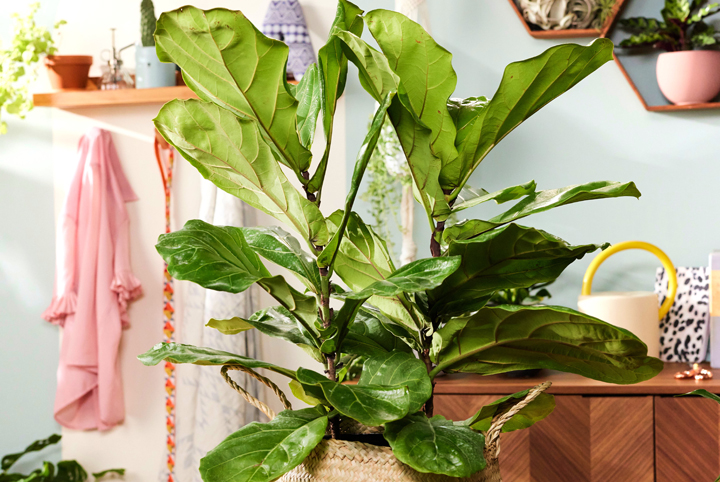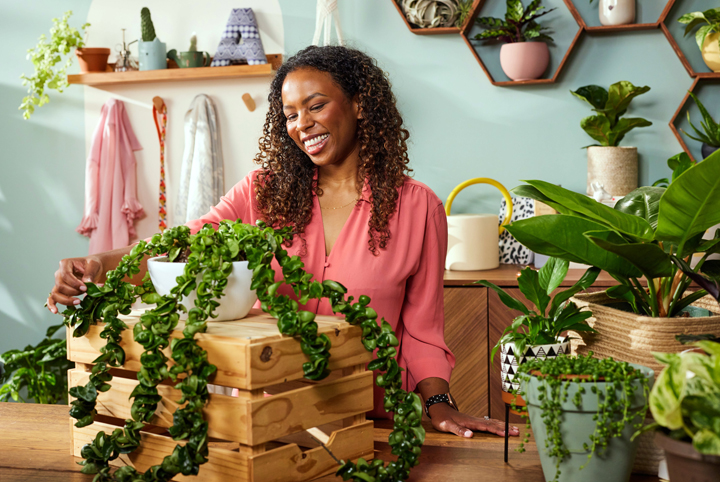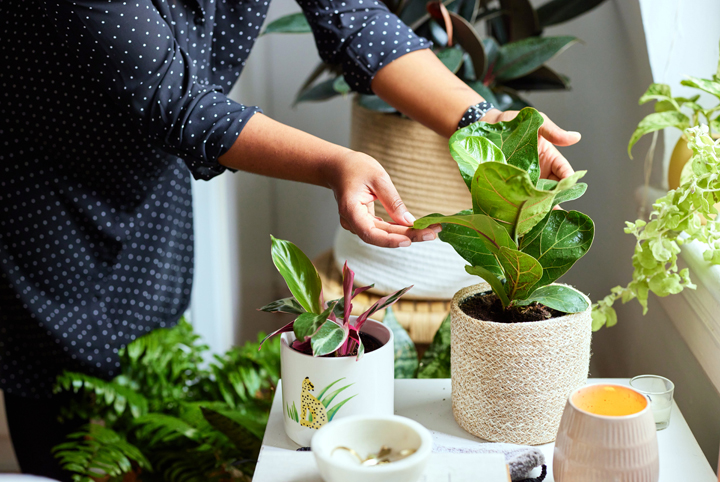
Houseplants are popular than ever, and plant shops and nurseries have tons of options to meet the growing demand. But all those options can be super overwhelming, especially for first-time plant parents.
So how do you choose the perfect houseplant for you without spending all your free time researching every variety of plant there is? Here are six factors to consider to guide you on your journey to plant parenthood or to choose the next plant to add to your growing collection.
1. Light
When you’re shopping for the right houseplant, one of the first factors to consider is the amount of sunlight each area of your home receives. Whether you’re looking for a plant to put in a bright windowsill or a dark corner will dictate what variety of plant you choose. One thing to keep in mind is that, although there are plants that can tolerate low light, no plant really thrives in low light. All plants need some light, so it’s not a great idea to put a plant in a totally windowless room.
Related: How to Brighten Up Your Home
2. Humidity
Different plants have different humidity requirements. For example, a cactus can survive a dry and arid environment, but a fern needs a more humid environment to thrive. If you know that you live in an area with very dry winters, tropical plants will need a humidity boost to avoid edges turning crispy.

3. Space
When adding a new plant friend to your home, don’t forget to consider space! How much space you have and where you want to put the plant will dictate what size plant you should get. Many plants (like sansevierias, fiddle leaf figs, and monsteras) come in small pots that are suitable for your desk in your home office, or larger pots to set on your living room floor.
Related: 15 Luckiest Plants for Your Home
4. Effort
When it comes to plant parenthood, how much effort are you looking to put in? This might come down to time. Do you only want to spend 5 minutes watering a plant once a week, or are you looking to make indoor gardening your new hobby or form of self-care? If you’re looking for minimal effort and time investment, consider a chill, easy to care for plant!
5. Budget
Although many common plants can be really affordable, plants that are rare, variegated, or in very high demand can be more on the pricey side. Knowing how much you’re looking to spend can help narrow down your plant choices.
Related: How to Create Your Own Budget-Friendly Home Reno – Without a Contractor
6. Preferences
Finally, don’t forget to consider your aesthetic preferences when choosing a plant! Do you just love quirky, spiky cacti, or are lusciously leafy tropicals more your style? If – like me – you know you want a home full of plants, I’ve found that larger leafy plants are the quickest way to achieve that goal.

Now you know what you want, and are at your local nursery ready to choose your plant. It’s a good idea to know what to avoid when looking for your perfect plant. If you see any of these three red flags, skip that plant and look for a healthier one.
1. Pests
There are many different kinds of pests that can affect houseplants. In general, some of the signs of pests include leaf damage, wilted or yellowing leaves, white fuzzy patches, brown lumps on the plant’s stems, or cobwebs. In some cases, you may see the pests themselves, which is of course another telltale sign.
If you bring home a plant with pests, those pests can spread to the rest of your plant collection. It’s a good idea to temporarily quarantine any new plants away from your existing collection just in case.
Related: 20 Hacks to Bring Your Plant Back to Life
2. Overwatering
Overwatering occurs when a plant is watered too frequently, causing the soil to remain soggy for a prolonged period of time. This, in turn, can lead to root rot, a disease that causes a plant’s roots to rot and decay.
Some common signs of root rot include soil that is very wet to the touch, and yellowing leaves with dark brown patches.
3. Underwatering
Underwatering occurs when a plant isn’t watered frequently enough. An underwatered plant will look thirsty and wilted, and may have yellowing leaves, or leaves that are a light crispy brown along the edges.
In many cases overwatering and underwatering can look similar, making it difficult to distinguish between the two. Here are some more common signs of overwatering and underwatering.
In general, when shopping for a plant, look for healthy-looking plants with perky leaves, little to no damage, and maybe even some signs of new growth.
Now that you have some things to look for and avoid, here are a few plant suggestions for beginner, intermediate, and advanced plant parents.
Beginner
If you’re a beginner plant parent, cacti, succulents, and easygoing houseplants are a great way to get started. Cacti and succulents can tolerate a little neglect, but you can set a watering schedule and water thoroughly when the soil feels dry.
ZZ plants are easygoing and notoriously hard to kill. They do well in moderate indirect light, but they will tolerate low light, so they might be a good idea to adorn a darker corner in your home.

Intermediate
If you have a few chill houseplants and are ready for a bit more of a challenge, venture into the realm of higher maintenance plants.
Rubber plants are a great “level up” plant and are more forgiving than the famously finnicky fiddle leaf fig, and they
Another great option is the inchplant, which is pretty hardy and easy to grow, but requires quite a bit of pruning and attention to look its best.
Advanced
If you’re an advanced plant parent and confident in your plant skills, level up again with some more demanding plants or rare plants such as fiddle leaf figs, or humidity-loving calatheas.
For more tips from plant expert Amanda, check out the video below:
Related: Our Resident Plant Mom Reveals the 5 Plants That’ll Improve Your Mental Health
HGTV your inbox.
By clicking "SIGN UP” you agree to receive emails from HGTV and accept Corus' Terms of Use and Corus' Privacy Policy.



